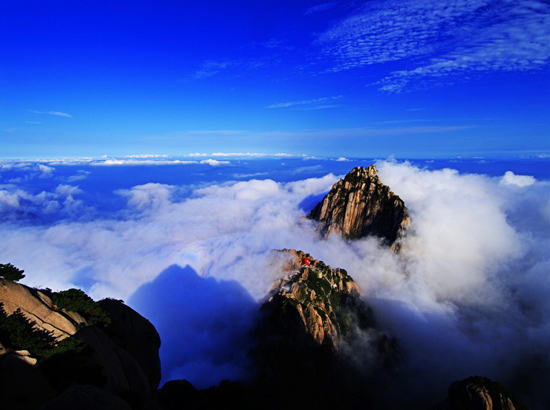March in Beijing is a time of hope, and despair. The Siberian winds that howl in from Mongolia begin to wane; renegade centigrades make a break for positive.
Beijing may get warmer in the third month of the year, but the weather can still be abysmal. Expect encounters with the wild children of meteorology – sleet, hail, sandstorms – before spring truly arrives.
For many residents, married to the city for the pre-Chinese New Year winter work slog, March is breaking point. Enough is enough. South China, with her promise of cozy valleys, warmer afternoons and an easy good time, beckons.
So you can imagine this journalist’s joy on being granted leave smack in the middle of the capital’s March melancholy. Goodbye, Early Spring Beijing, I thought, and good riddance. It’s been awful. See you when you’ve had a change of heart.

Huangshan, You Spoil Me
I didn’t deserve Huangshan. I only knew her a short while – I left after a week, God knows why – but I’ll never forget her. She’s got looks, she’s got style, she’s got big-city smarts and small-city charm. If you’re planning a trip to China in spring, forget about Beijing. Shack up with Huangshan instead. You won’t regret it.
Huangshan in Chinese means “Yellow Mountain.” The city was renamed after the famed peaks, the highest of which reach almost 2,000 meters above sea level, in 1987, presumably to encourage tourism. Yellow Mountain technically refers to a whole range of mountains, though it’s most often mentioned in the singular.
If you’ve ever seen traditional Chinese mountain paintings, you’ve probably seen Yellow Mountain. It’s been a favorite of painters, poets and novelists since time immemorial. It offers, without a doubt, some of the most spectacular natural scenery in the whole of China. A traditional Chinese proverb mentions five mountains in the country as being beyond and above all others in terms of beauty. But it cheekily adds that Yellow Mountain beats all of them. Needless to say, it’s also a UNESCO world heritage site.

Yellow Mountain exerts a strong influence on this picturesque pocket of Anhui Province. Such is its gravity, in fact, the region as a whole has managed to escape the rampant industrialization that has left large tracts of the Chinese countryside grimy and polluted. Huangshan’s main industry is nature tourism, and the local government wants to keep it that way. During our stay, we didn’t see a single plant, factory or industrial chimney. This shows – or rather doesn’t show – in the local air quality. Beijing’s readings of particulate matter (PM) 2.5 for the week we were in Huangshan were consistently above 100. Some days they topped 300. In Huangshan, however, PM2.5 readings were always below 10.
We recommend:
